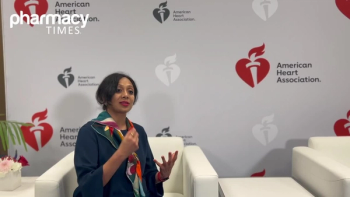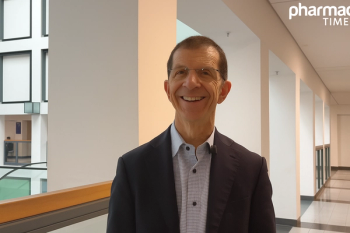
Massive Change Could Be Looming for Specialty Pharmacy
During the featured session at Asembia’s Specialty Pharmacy Summit 2019, “Specialty Industry Outlook: What’s Next,†speakers Adam Fein, PhD, CEO of the Drug Channels Institute; Lisa Gill, managing director of J.P. Morgan Securities; and Doug Long, vice president of industry relations at IQVIA, explored the radical changes that could be on the horizon from potential legislation that would dramatically alter the health care industry.
With drug pricing increasingly becoming a hot button issue and greater consternation surrounding the cost of treating a chronic disease among the general public, it is clear that the health care industry is at a crossroads.
During the featured session at Asembia’s Specialty Pharmacy Summit 2019, “Specialty Industry Outlook: What’s Next,” speakers Adam Fein, PhD, CEO of the Drug Channels Institute; Lisa Gill, managing director of J.P. Morgan Securities; and Doug Long, vice president of industry relations at IQVIA, explored the radical changes that could be on the horizon from potential legislation that would dramatically alter the health care industry.
Fein pointed to a proposal from the Department of Health and Human Services that would remove safe harbor protection under the Anti-Kickback Statute for rebates on prescription drugs paid by manufacturers to pharmacy benefit managers (PBMs), Part D plans, and Medicaid managed care organizations.
“We are at an inflection point that potentially is going to change the entire commercial model of the pharmaceutical industry for the first time in probably a generation,” Fein said. “We are at a turning point that three years ago I didn’t even think was possible. We are potentially on the verge of moving to a world without PBM rebates, a total change in all the ways that we do business.”
Fein noted a number of factors that have contributed to what would be a dramatic shift in the way that health care is funded, which began to gain steam following a price hike for the epinephrine autoinjector Epipen, which garnered scrutiny in the media and from legislators. He said that the gross-to-net bubble—a term developed by the Drug Channels Institute to describe the profit between the list price a manufacturer sets for a drug and the net price after rebates and other reductions—has continued to inflate and has driven a multitude of problems with the US drug pricing system.
“What happened is we have this giant gap between the list, or gross price, and the actual price that is received by the manufacturer,” Fein said. “Some categories are so broken that the gap between the list and the net is 80% or 90%. The net price received by manufacturers is growing in low single digits.”
The inflation of this bubble has led to three elements that are creating a growing crisis for patients, according to Fein.
The first element is that the amount in spending either on coinsurance or a deductible is now more than 50% of the total that patients pay out-of-pocket, compared with 15% to 20% a decade ago, according to Fein.
“Patients can be in the deductible and not be able to afford their insulin because they have to pay the full price,” he said. “That is a travesty and it’s been a travesty of benefit design where we’ve shifted cost to people who maybe don’t need motivation to have skin in the game. If you have cancer, you don’t need motivation to take your medicine. Making it essentially unaffordable through benefit design is, I think, cruel. It doesn’t make any sense to me.”
The second element is a factor Fein called reverse insurance, which runs counter to normal insurance in which the healthy pay premiums for services they may not need to subsidize the sick.
“What’s happening now with the gross-to-net bubble is the reverse of that,” he said. “If you are chronically ill, if you have a serious condition that’s generated a lot of rebate dollars, you may be forced to pay a very high price for that drug. The money that you’re contributing is used to lower the premiums of the healthier people.”
The third element is what Fein called warped incentives, in which all parties in the health care system want list prices to go higher.
Despite the speculation that has surrounded the rebate rule, during her presentation, Gill said Wall Street does not expect major changes in the short term.
“We’ll probably have some types of programs that will happen,” she said. “I agree that the world will change, but I really do believe there’s still a great opportunity for the PBM industry to help to manage this.”
Gill said that the real value of PBMs is to drive patients to the right drug, which the government has started to appreciate.
“I do think that PBMs have a real place in the marketplace to drive clinical protocols and to drive clinical outcomes,” she said. “Even if we don’t have rebates, I still think at the end of the day, you’re going to need someone to negotiate based on the size and scale of the marketplace.”
She added that the persistent challenges in the current health care model have created a situation in which the consumer is becoming the biggest disruptor in health care.
“Plan design has not been put in place with the thought around how does this impact somebody’s out of pocket costs and those patients now are getting more involved in their health care decisions,” she said. “They are making more of those decisions because they’re paying more out of pocket dollars.”
Gill said that convenience, quality, and cost will be the key drivers of this disruption, as she warned that a shift to value-based care must come to fruition and that the companies that are part of the solution to this shift will reap the greatest long-term benefits.
“I had a great conversation with a health care leader last week where he said to me ‘Lisa, we’re going to have Medicare for all 10 years from now if we do not move our health care system toward value-based care’” she said. “The perverse incentives of the way our health care system works today will not last.”
During his portion of the presentation, Long provided an overview of trends and an outlook for the future of the US pharmaceutical market. He outlined the major forces that are combining to drive the desire for change in the health care system.
These forces include the increasing cost for care and the growing scrutiny surrounding value, which have prompted a reassessment of the payer role and new sustainable models as patients become more involved in health care decision-making due to the challenges created for the entire system from lack of adherence.
“During the deductible period, the patient is more likely to abandon their medication,” Long said. “Twenty-seven percent of the time, they will abandon a specialty drug during the deductible period. That’s why copay cards are so important. People are going to say it’s just not worth it to me to take my medication.”
With a clear need for changes to the health care system to protect patients, the panelists agreed that the current model is reaching a tipping point that could lead to a tectonic shift in care management.
“This is probably a time of greater change than I’ve ever seen in this industry,” Fein said. “My final piece of advice to you with all this change, with all this trouble, with all this complexity, is please try to stay positive and, as always, test negative.”
Newsletter
Stay informed on drug updates, treatment guidelines, and pharmacy practice trends—subscribe to Pharmacy Times for weekly clinical insights.















































































































































































































